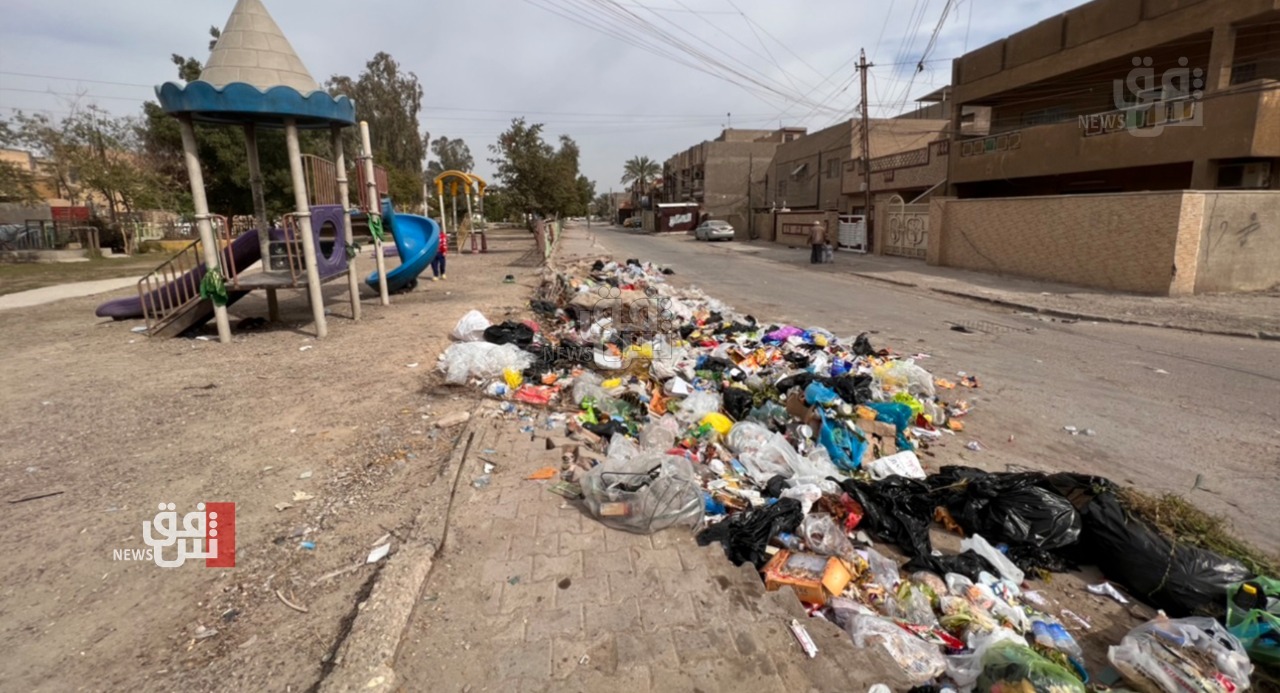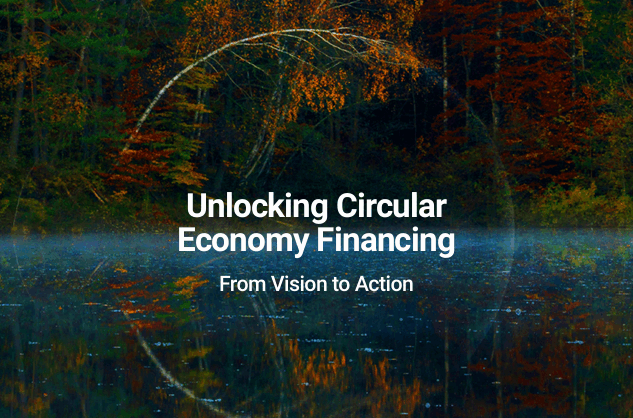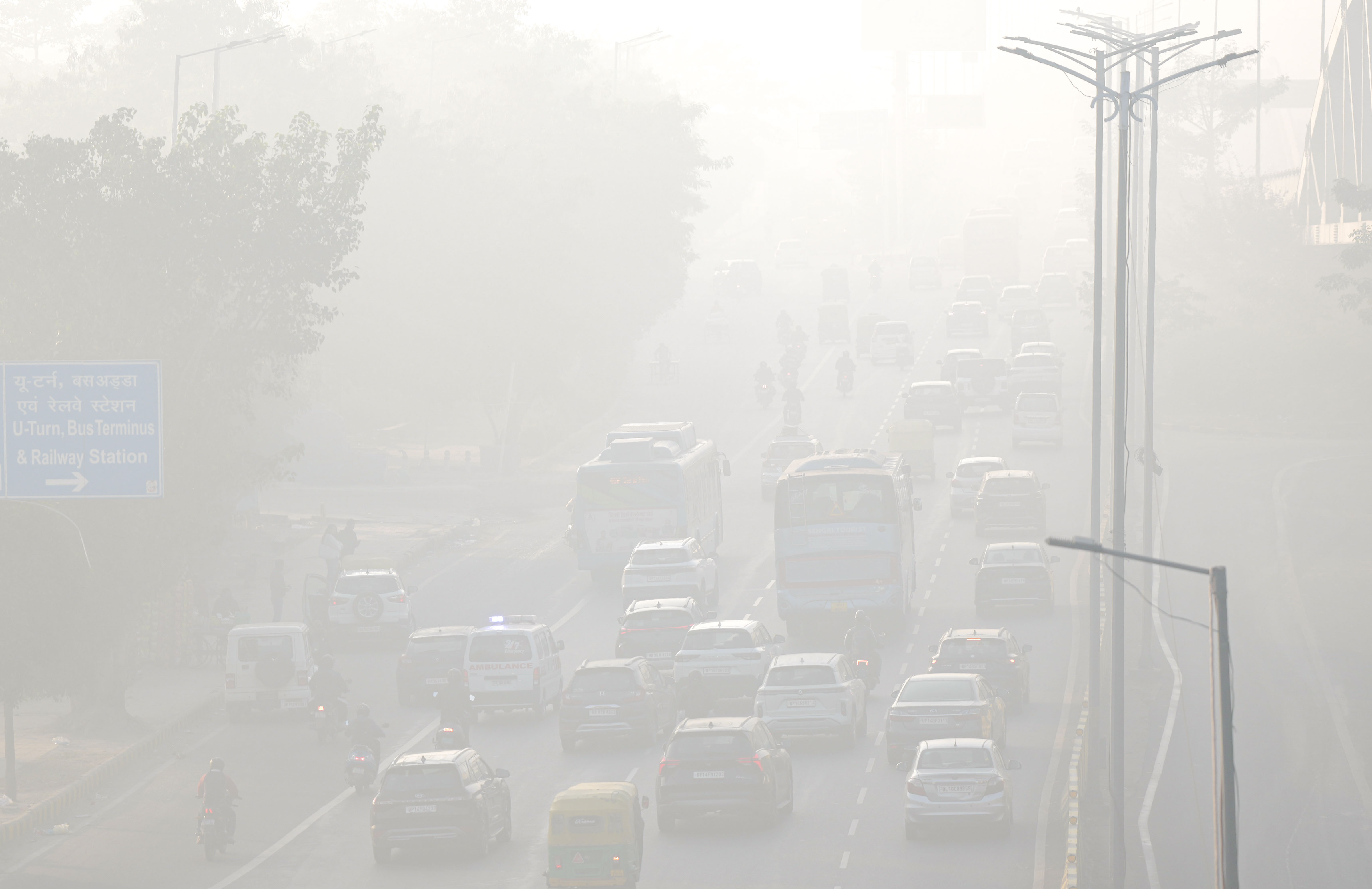Poor air quality averages: Toxic fumes choke Baghdad – Shafaq News – شفق نيوز

Report on Medical Waste Mismanagement in Iraq and its Conflict with Sustainable Development Goals
Iraq’s improper management of medical waste presents a significant obstacle to achieving multiple Sustainable Development Goals (SDGs), creating severe public health crises and environmental degradation. This failure undermines progress towards ensuring healthy lives (SDG 3), providing clean water and sanitation (SDG 6), and building sustainable communities (SDG 11). A 2023 World Health Organization report confirms that inadequate resources, political instability, and an overburdened healthcare system are primary contributors to this systemic challenge.
Case Study: Abu Ghraib General Hospital and its Impact on SDGs
The situation at Abu Ghraib General Hospital exemplifies the direct conflict between current practices and Iraq’s sustainable development commitments. The hospital’s practice of open-pit burning of medical waste in a residential area directly contravenes key SDG targets.
Violations of SDG 3 (Good Health and Well-being) and SDG 11 (Sustainable Cities and Communities)
- The open burning releases carcinogenic pollutants like dioxins and furans, directly threatening the health of local residents and undermining SDG Target 3.9, which aims to reduce deaths from hazardous chemicals and pollution.
- Toxic fumes force residents to remain indoors or flee the area, degrading living conditions and contradicting SDG Target 11.6, which focuses on reducing the adverse per capita environmental impact of cities, including air quality.
- Activist Jamal Al-Tai noted the severe impact on individuals with chronic illnesses, highlighting how these practices disproportionately affect vulnerable populations.
Regulatory Failures and SDG 16 (Peace, Justice, and Strong Institutions)
Despite the Iraqi Ministry of Environment’s Instruction No. 3 (2015) mandating proper waste segregation and disposal, enforcement remains weak. This lack of implementation, as seen in Abu Ghraib, points to institutional failures that impede progress on SDG 16, which calls for effective, accountable, and transparent institutions.
Analysis of Medical Waste and Management Practices in Relation to SDG 12
The management of medical waste is a critical component of SDG 12 (Responsible Consumption and Production), which calls for the environmentally sound management of all wastes. Iraq’s current system falls short of global standards.
Classification of Medical Waste
- Liquid Waste: Includes laboratory water and diagnostic chemicals requiring treatment before discharge to prevent water contamination, aligning with SDG 6 (Clean Water and Sanitation).
- Solid Waste:
- Regular Waste: Non-hazardous materials managed through standard disposal.
- Hazardous Waste: Infectious materials, sharps, pharmaceuticals, and chemical agents requiring specialized treatment to mitigate risks to public health and the environment, as mandated by SDG 12.
Gap Between Iraqi Practices and Global Standards
Louay Al-Mukhtar, spokesperson for the Ministry of Environment, confirmed that hazardous medical waste requires specialized treatment such as high-temperature incineration or autoclaving. However, Iraq’s reliance on open-pit burning and outdated incinerators contrasts sharply with practices in developed nations, where advanced technologies are used to safely neutralize waste and prevent toxic emissions. This technological and infrastructural gap hinders the achievement of SDG 12. The lack of trained personnel and proper equipment, as highlighted by Al-Mukhtar, further illustrates the systemic challenges in implementing responsible waste management protocols.
Comprehensive Impact on Sustainable Development
Iraq’s generation of 0.5 kg of medical waste per capita daily, significantly above the global average, coupled with mismanagement, leads to severe consequences that cut across multiple SDGs.
Impacts on Health, Environment, and Society
- Human Health Risks (SDG 3 & SDG 8): Healthcare workers face a 32% rate of needle stick injuries, far exceeding the global average. This poses a direct threat to worker safety (SDG 8: Decent Work) and public health (SDG 3) through the potential transmission of HIV, Hepatitis B, and Tuberculosis.
- Environmental Degradation (SDG 6 & SDG 11): The Ministry of Environment reported that 25% of groundwater samples near healthcare facilities are contaminated with pharmaceutical residues, threatening clean water sources (SDG 6). Air pollution from open burning contributes to respiratory illnesses, undermining the goal of sustainable cities (SDG 11).
- Public Health Crisis (SDG 3): Communities near waste dumping sites report a 45% higher incidence of respiratory and gastrointestinal diseases, demonstrating a clear failure to protect public health.
- Vulnerable Populations (SDG 10): A 2023 UNICEF report found that children near open dumping sites are 70% more likely to suffer developmental disorders, highlighting how mismanagement exacerbates inequalities and disproportionately harms the most vulnerable, in direct opposition to SDG 10 (Reduced Inequalities).
Stakeholder Efforts and Challenges to SDG Implementation
Governmental and non-governmental efforts to address the crisis are underway but face significant obstacles, impacting the achievement of SDG 16 (Strong Institutions) and SDG 17 (Partnerships for the Goals).
Government and International Partnerships
The government’s Instruction No. 3 and a $25 million partnership with the UNDP to establish modern treatment facilities represent progress towards SDG 17. However, implementation is slow, with only 25% of hospitals modernized. As noted by Majid Shangali of the Parliamentary Health and Environment Committee, a majority of facilities still lack specialized equipment. Corruption and mismanagement of funds, cited by Transparency International, further undermine the effectiveness of these institutions, hindering progress on SDG 16.
Role of Non-Governmental Organizations
NGOs like the Green Iraq Foundation are filling critical gaps by launching public awareness campaigns and providing equipment, contributing to SDG 3 and SDG 12 at a local level. These organizations demonstrate the importance of civil society in driving the SDG agenda, particularly when governmental systems are insufficient. However, their efforts are limited in scope and cannot replace the need for systemic, nationwide infrastructure and regulatory enforcement.
Conclusion: Activist Calls for an SDG-Aligned Response
Activists are leveraging public awareness campaigns and protests to demand a response aligned with the Sustainable Development Goals. Their calls to action focus on key areas for improvement.
Demands for Systemic Change
- Investment in Infrastructure: A call for increased government investment in modern waste treatment technology to meet the targets of SDG 11 and SDG 12.
- Regulatory Enforcement: Demands for the consistent enforcement of environmental laws to build effective institutions, as outlined in SDG 16.
- International Collaboration: A push for greater technical and financial assistance from international bodies like the WHO and UNEP, reinforcing the importance of global partnerships (SDG 17) to overcome domestic challenges.
Addressing Iraq’s medical waste crisis is not merely an environmental issue but a fundamental requirement for achieving a sustainable, healthy, and equitable future for its citizens as envisioned by the 2030 Agenda for Sustainable Development.
Sustainable Development Goals (SDGs) Analysis
1. Which SDGs are addressed or connected to the issues highlighted in the article?
-
SDG 3: Good Health and Well-being
- The article extensively discusses the severe health risks posed by improper medical waste management in Iraq. It highlights increased rates of respiratory illnesses, gastrointestinal diseases, and potential transmission of infectious diseases like HIV and Hepatitis B. The text explicitly mentions that “improper management of its medical waste, posing serious health risks” and that vulnerable populations, including children and the elderly, are disproportionately affected.
-
SDG 6: Clean Water and Sanitation
- The article addresses the contamination of water resources. It states that “Hazardous waste, including pharmaceutical residues, heavy metals, and toxic chemicals, often seeps into soil and groundwater supplies.” This directly relates to the goal of ensuring the availability and sustainable management of water and sanitation.
-
SDG 11: Sustainable Cities and Communities
- The issue is framed within urban contexts, such as the case of Abu Ghraib General Hospital located “in the heart of a residential neighborhood” in Baghdad. The article discusses the adverse environmental impact on cities, including air pollution from open burning of waste, which affects the health and safety of urban communities.
-
SDG 12: Responsible Consumption and Production
- This goal is central to the article, which focuses on the “environmentally sound management of chemicals and all wastes.” The entire text is about the failure to manage medical waste properly, from generation (0.5 kg per capita daily) to disposal. It details the lack of proper segregation, treatment, and disposal methods, contrasting Iraq’s practices with global best practices.
-
SDG 16: Peace, Justice and Strong Institutions
- The article points to institutional failures as a root cause of the problem. It mentions that challenges like “political instability, resource shortages, and inconsistent enforcement” hinder progress. The failure to enforce regulations like “Instruction No. 3” and reports of corruption and mismanagement of funds highlight weaknesses in governance and institutions.
-
SDG 17: Partnerships for the Goals
- The article describes collaborative efforts to address the crisis. It mentions the partnership between the Iraqi Ministry of Health and the United Nations Development Programme (UNDP) to secure investment. It also highlights the crucial role of non-governmental organizations (NGOs) like the Green Iraq Foundation and calls by activists for greater collaboration with international bodies like the WHO and UNEP.
2. What specific targets under those SDGs can be identified based on the article’s content?
-
SDG 3: Good Health and Well-being
- Target 3.3: End the epidemics of AIDS, tuberculosis… and combat hepatitis and other communicable diseases. The article connects this target by highlighting the risk of disease transmission, including “HIV, Hepatitis B, and Tuberculosis,” due to needle stick injuries and exposure to contaminated waste.
- Target 3.9: By 2030, substantially reduce the number of deaths and illnesses from hazardous chemicals and air, water and soil pollution and contamination. This is directly addressed by the article’s description of toxic fumes from open burning containing “dioxins and furans, which are carcinogenic,” and the contamination of soil and groundwater with “pharmaceutical residues, heavy metals, and toxic chemicals.”
- Target 3.d: Strengthen the capacity of all countries… for early warning, risk reduction and management of national and global health risks. The entire medical waste crisis described in the article represents a national health risk that requires strengthened capacity for management and risk reduction.
-
SDG 6: Clean Water and Sanitation
- Target 6.3: By 2030, improve water quality by reducing pollution, eliminating dumping and minimizing release of hazardous chemicals and materials. The article directly relates to this target by stating that hazardous waste “seeps into soil and groundwater supplies” and that “25% of groundwater samples near healthcare facilities in Baghdad and Basra contained detectable levels of pharmaceutical contaminants.”
-
SDG 11: Sustainable Cities and Communities
- Target 11.6: By 2030, reduce the adverse per capita environmental impact of cities, including by paying special attention to air quality and municipal and other waste management. The case of Abu Ghraib Hospital burning waste in a residential area, releasing “toxic fumes,” is a clear example of poor urban waste management that degrades air quality and harms residents.
-
SDG 12: Responsible Consumption and Production
- Target 12.4: By 2020, achieve the environmentally sound management of chemicals and all wastes throughout their life cycle… and significantly reduce their release to air, water and soil. This target is the core theme of the article, which details the failure in Iraq to manage medical waste soundly, leading to the release of pollutants into the environment.
- Target 12.5: By 2030, substantially reduce waste generation through prevention, reduction, recycling and reuse. The article implies the need for this target by noting that Iraq generates “approximately 0.5 kilograms of medical waste per capita daily… which is significantly higher than the global average.”
-
SDG 16: Peace, Justice and Strong Institutions
- Target 16.6: Develop effective, accountable and transparent institutions at all levels. The article highlights the lack of effective institutions through “inconsistent enforcement” of environmental regulations, and a Transparency International report indicating that “funds allocated for waste management projects are often mismanaged or diverted.”
-
SDG 17: Partnerships for the Goals
- Target 17.16: Enhance the global partnership for sustainable development, complemented by multi-stakeholder partnerships. This is demonstrated by the existing partnership between the Iraqi government and the UNDP, the work of NGOs, and activists’ calls for “greater collaboration with international organizations to secure funding and expertise.”
3. Are there any indicators mentioned or implied in the article that can be used to measure progress towards the identified targets?
-
Indicators for SDG 3 (Good Health and Well-being)
- Rate of occupational injuries: 32% of healthcare workers in Iraq experienced needle stick injuries in 2023.
- Mortality/morbidity rate from pollution: Communities near dumping sites report a 45% higher incidence of respiratory and gastrointestinal diseases.
- Impact on child development: Children living near open dumping sites are 70% more likely to suffer from developmental disorders.
-
Indicators for SDG 6 (Clean Water and Sanitation)
- Water quality measurements: 25% of groundwater samples near healthcare facilities in Baghdad and Basra contained detectable levels of pharmaceutical contaminants.
-
Indicators for SDG 11 (Sustainable Cities and Communities)
- Waste generation rate: Iraq generates 0.5 kg of medical waste per capita daily.
- Air quality: The release of carcinogenic pollutants like “dioxins and furans” from open burning serves as a qualitative indicator of poor urban air quality.
-
Indicators for SDG 12 (Responsible Consumption and Production)
- Proportion of waste treated: Over 60% of medical waste is burned in open pits or dumped in municipal landfills.
- Adoption of sound disposal technology: Only 25% of hospitals in Iraq have been equipped with modernized waste disposal systems.
- Implementation of waste management practices: 40% of healthcare facilities lack adequate segregation practices.
-
Indicators for SDG 16 (Peace, Justice and Strong Institutions)
- Level of corruption: A 2024 Transparency International report indicated mismanagement and diversion of funds allocated for waste management.
- Enforcement of regulations: The article notes that guidelines from Instruction No. 3 (2015) are not always followed.
-
Indicators for SDG 17 (Partnerships for the Goals)
- Financial flows: A $25 million investment was secured in 2023 through a partnership with the UNDP.
- Civil society engagement: NGOs like the Green Iraq Foundation have distributed over 10,000 medical waste segregation bins and provided protective gear.
4. Table of SDGs, Targets, and Indicators
| SDGs | Targets | Indicators |
|---|---|---|
| SDG 3: Good Health and Well-being |
|
|
| SDG 6: Clean Water and Sanitation |
|
|
| SDG 11: Sustainable Cities and Communities |
|
|
| SDG 12: Responsible Consumption and Production |
|
|
| SDG 16: Peace, Justice and Strong Institutions |
|
|
| SDG 17: Partnerships for the Goals |
|
|
Source: shafaq.com
What is Your Reaction?
 Like
0
Like
0
 Dislike
0
Dislike
0
 Love
0
Love
0
 Funny
0
Funny
0
 Angry
0
Angry
0
 Sad
0
Sad
0
 Wow
0
Wow
0
















































:focal(1500,1000)/https://media.globalcitizen.org/a6/9a/a69a4720-d8a1-4715-b596-18738d03c05c/rotary_polio_hero_image.jpg?#)







/countries/sri-lanka/photo-credit---dmc-sri-lanka.tmb-1200v.jpg?sfvrsn=dc298bcc_1#)


















